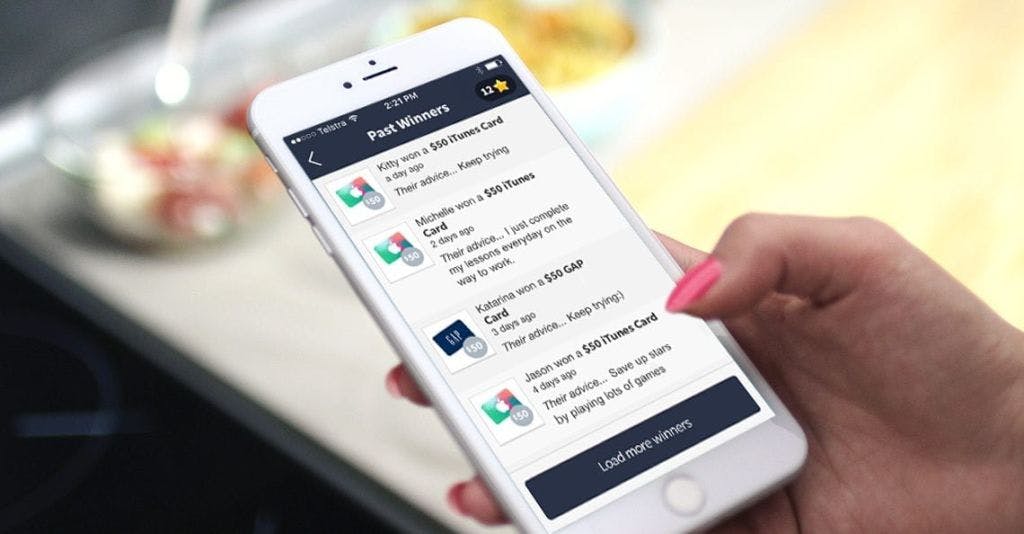5 Reasons for mobile learning

Learning and Development that takes an engaging and fun approach will always be received well by your learners and produce better results for your company. When you make your microlearning ‘fun’, workplace culture improves, employee motivation rises and knowledge retention is unparalleled. Delivering learning on mobile devices is one of the best ways to create fun learning experiences. It’s far superior to desktop learning.
5 reasons why mobile learning is more ‘fun’ than learning on a desktop:
1. Intrinsically linked to fun
Desktops are often considered a task-orientated device with many people equating their desktop or laptop to work. Alternatively, we use our mobile phones daily for everything from conversation and social media to photography and games. This notion of using our mobile devices for entertainment binds the association of mobiles to ‘fun’. An association that carries through to other tasks performed on the device, including mobile learning.
2. Enjoyable features
Gamification tools and finger-touch interactions make learning content much more enjoyable for your users. These features cannot be exploited to the same effect on desktop platforms. EdApp’s Template Library boasts a selection of highly interactive templates for you to ask your users to swipe, slide, rotate, pinch and dial their answers onto their smartphone.
With mobile you can also utilize push notifications to large effect. Push notifications that incentivize your learners to complete lessons with prizes, leaderboards and the achievement of badges present learning as a fun competition rather than a chore. These Gamification features incorporate a sense of fun, disguising the ‘work’ element to Training & Development and thus making learning more fun for your learners.

3. Mobile is social
Social media apps Instagram and Snapchat are predominantly mobile only with a minimal desktop offering. This is because it is more natural to share content on mobile than it is a desktop. Even when presented with the choice, users choose to access social media on their phones rather than desktop – 54% of Facebook’s 1.65 billion daily active users do so exclusively on mobile.
Whether it is due to the personal nature of mobile or the compatibility of mobile created content to social media platforms, mobile’s lend themselves to sharing more so than desktops.
When it comes to mobile and desktop learning, the sharing of content drives discussions around learning into commonplace office conversations. With social elements such as the display of previous winners and leaderboards, EdApp often has the ability to fuel a friendly competition between colleagues injecting a sense of fun to their learning and uplifting workplace culture
4. Fewer barriers
The idea of tech-based learning can be a daunting confrontation to some of your learners. A simple malfunction can be enough to turn them away from completing a lesson in sheer frustration. When learning is delivered on a device they use everyday, there are fewer technological barriers to overcome for a user to complete their learning. With the average adult spending 4.7 hours a day on their phone it’s hard to deny mobiles are familiar to your learners. When you present learning with as few hurdles as possible, not only will completion rates rise, the learning experience will be more enjoyable and accessible for your learners.

5. Mobile spontaneity
Completing a lesson with a desktop requires setting aside time to not only complete the lesson but to ensure you are in the same location of where the desktop is installed. These issues do not apply to mobile learning.
Content delivered on mobile devices is much less of a chore to complete. Users are likely to have their phone with them 22 hours a day – perfect for spontaneous learning sessions when small bursts of free time arise. Content delivered on mobile is also micro in duration, meaning lessons can truly be completed anywhere anytime.
When comparing mobile to desktop, mobiles will always deliver the more engaging and enjoyable experience for learners. The flexible nature of the device coupled with the utilization of gamification features available on Ed, enables you to present learning content as a fun activity rather than a required work-related task. By delivering enjoyable learning, you can experience high knowledge retention and a motivated collaborative team.
To find out more about how EdApp can help you move from desktop learning to mobile, get in touch at enquiries@edapp.com or start using its interactive and gamified templates to create your own engaging microlessons instantly by trying it for free right now by signing up here or in the box below.
Curated course examples
Author
Guest Author Daniel Brown
Daniel Brown is a senior technical editor and writer that has worked in the education and technology sectors for two decades. Their background experience includes curriculum development and course book creation.
